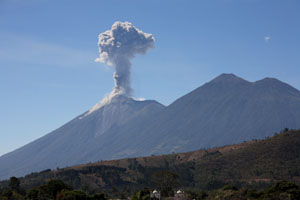
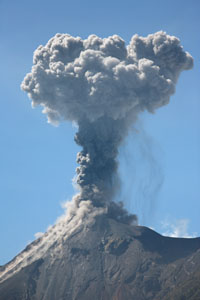
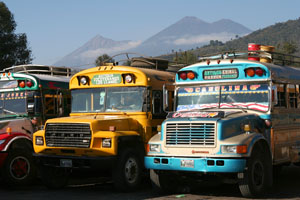
Fuego (erupting), Meseta, Acatenango (highest peak), Yepocapa (on right)
Strong explosive eruption of Fuego with associated rockfalls, Dec. 2007
Fuego and Acatenango complexes seen from Antigua bus station
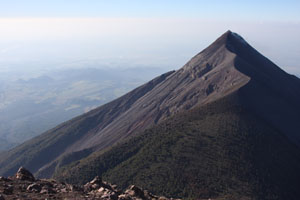 |
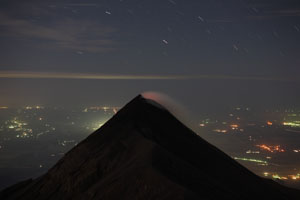 |
|
Summit and E flank of Fuego with forest-covered Meseta in foreground |
Summit of Fuego seen at night. Weak incandescence is visible. |
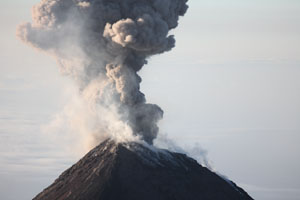 |
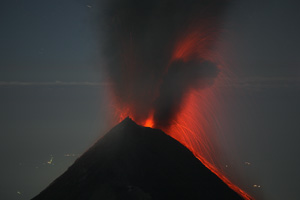 |
|
Daytime ash-rich strombolian eruption from Fuego, Dec. 2007 |
Nighttime strombolian eruption of Fuego. |
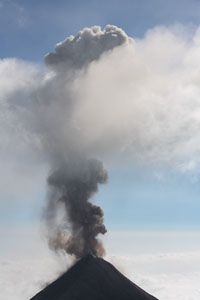 |
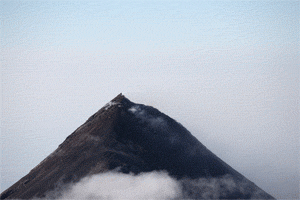 |
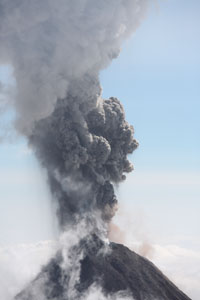 |
|
Fuego ash eruption, Dec. 2007 |
Fuego ash eruption animation, Dec. 2007 |
Fuego ash eruption, Dec. 2007 |